#axonometric
Explore tagged Tumblr posts
Text
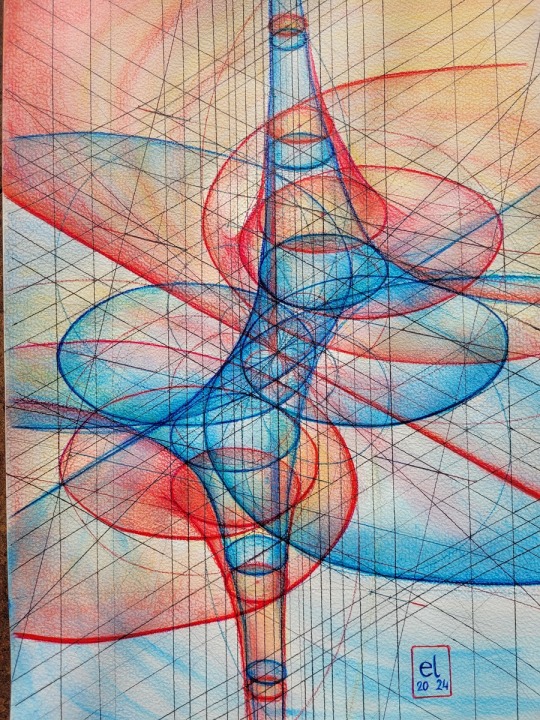
Reality and Imagination for real
Real and imaginary part of complex function 1/z - "Reality and Imagination" - for the first time drawn traditionally on paper, therefore I call it: "Reality and Imagination for real".
I picked the colors intuitively, but now I see: Red pill versus blue pill :-)
Geometric drawing - axonometry, creating the "3D view" from the view from above - "cloverleaf-like", placed in the center of the drawing - and from the side - where circles become just lines. Graphite pencil, watercolor pencils, ballpoint pens.
The contour lines of these functions are actually just circles whose radii decrease reciprocally with height, and which are aligned along one point of the circumference. The towers of reality and imagination can be rotated into one another. I also often call them "trumpets" - it's 4 trumpets, two blue and two red ones, each opening up to an infinite circle.
#mathematics#science themed art#drawing#watercolor pencils#descriptive geometry#axonometric#portfolio#mathart
89 notes
·
View notes
Text













Not A Hotel Fukuoka, Japan
Design axonometric + NKS2 Architects
#art#design#architecture#travels#boutique hotel#interior design#luxury lifestyle#luxury hotel#interiors#luxury hotels#terrace#green#gardens#landscaping#axonometric#NSK2 architects
87 notes
·
View notes
Text
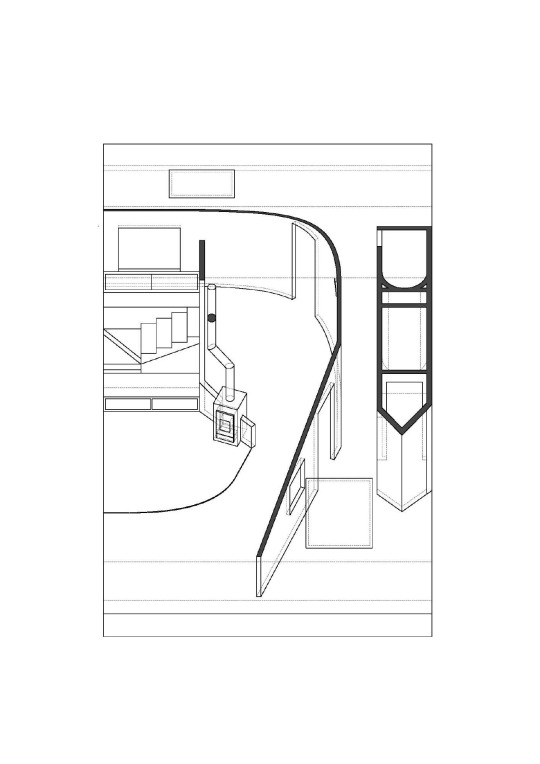
Doorless House Casa Antillón Madrid, Spain, 2024
6 notes
·
View notes
Text

4 notes
·
View notes
Text

Axonometric view of the exhibition place.
2 notes
·
View notes
Text
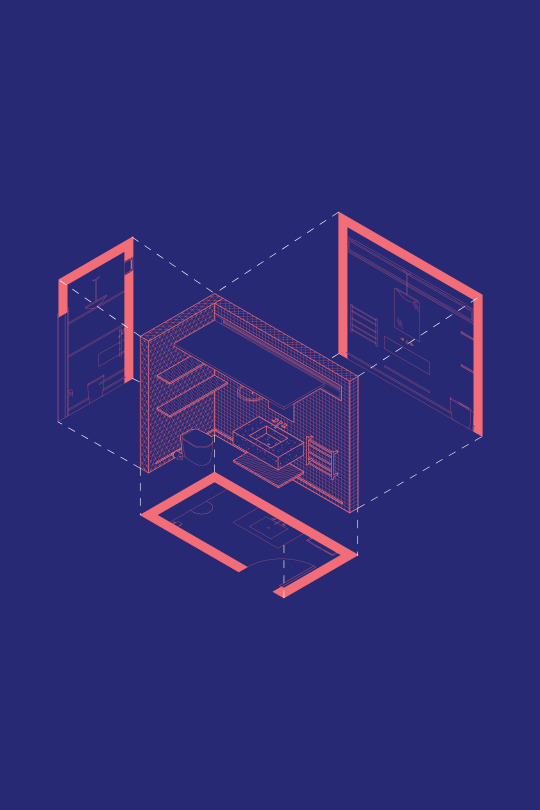
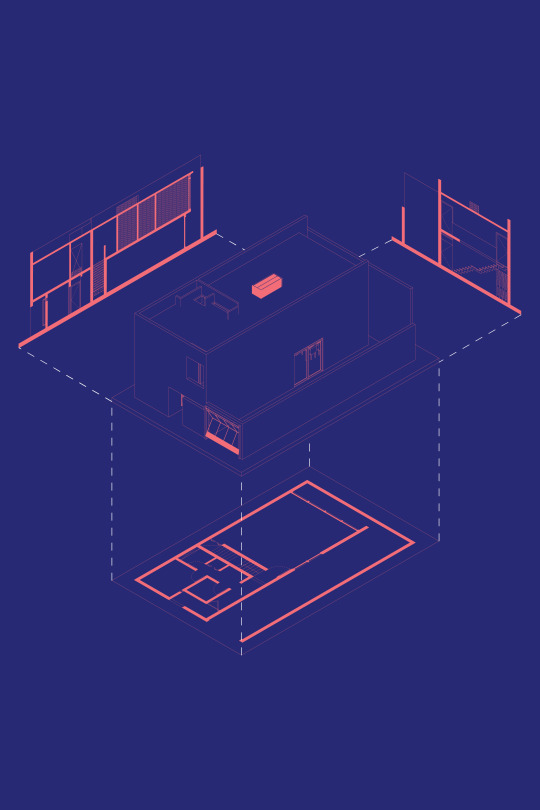
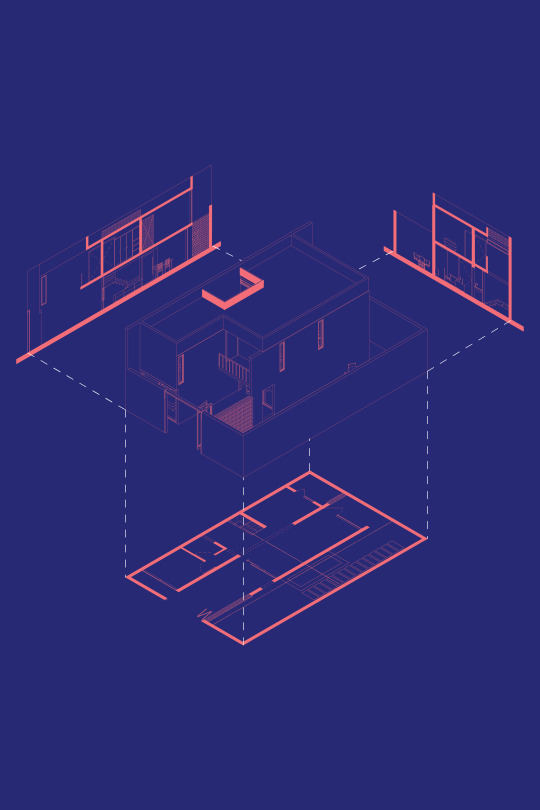
18 notes
·
View notes
Text

Architecture Monochrome Sections in Rhino 8 - Fast and Easy Architecture Drawings in Rhino 8
This video course covers how to create monochrome sections in Rhino 8. You do not need to use any other program other than Rhino 8. This course is great for anyone creating architecture or design sections, axons, schematics, or diagrams for school, portfolios, projects, competitions, and professional work.
#sections#architecturesection#rhino8#architectureportfolio#architecture#architecturediagrams#diagrams#architecturedrawing#rhino3d#3d#archtutorial#adobeillustrator#vectorart#rendering#infographic#graphicdesign#parametric#parametricarchitecture#structure#architectureplan#architecturecompetition#axon#axonometric#perspectivesection#perspective
2 notes
·
View notes
Text
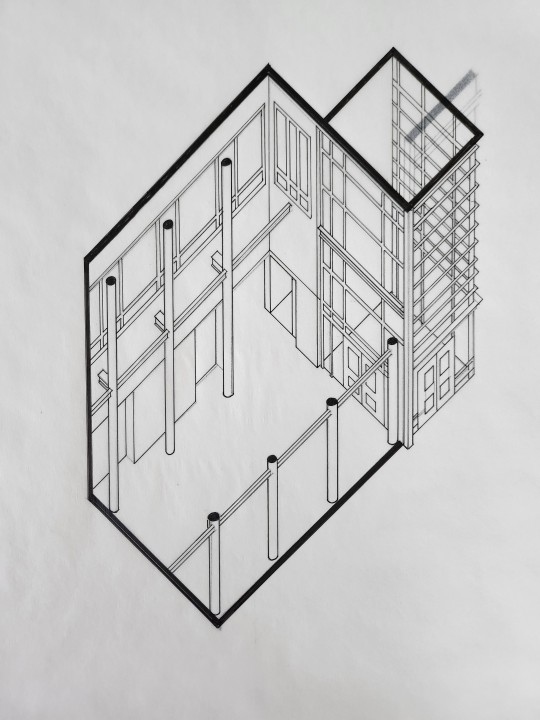
Check out this sick axonometric drawing I did today! Is it perfect, absolutely not, but I'm very pleased. Please disregard that goofy rectangle blob in the top right. I forgot to remove a layer beneath before photographing 😆
11 notes
·
View notes
Text
#00231

dual_axo_savoye.jpg
2 notes
·
View notes
Text

Bird's Eye view of the abbey of Port-Royal-des-Champs, after an engraving by Louise-Magdaleine Horthemels, c.1710
exquisite drawing of buildings and grounds....
_ik
2 notes
·
View notes
Text

Design District Isometric
#architecture#lookingup_architecture#superarchitects#urbanexploration#brutalism#jj_architecture#perspective#archidaily#brutal_architecture#technical drawing#architecturaldrawing#archistudent#architizer#archilovers#isometric#axonometric#diagram#structure#geometry
2 notes
·
View notes
Text

I've recently started to create geometric drawings (axonometry) of mathematical functions, the same ones I usually tackle with code.
One could say it does not make sense to painstakingly draw what code could create quickly. But for me the interesting thing is to grasp these functions on a different, more intuitive level - compared to mentally processing mathematical formulae or casting it into computer code. After literally decades of dealing with mathematical expressions and code I have rediscovered descriptive geometry, as sort of a "third language" (in addition to math or code) to say the same things. I am also fascinated by the little math puzzles that pop up when I create these drawings, and which require a completely different approach than calculations or programming.
I am usually drawing them at least three times, until I am somewhat satisfied. The journey is the reward anyway :-)
Here is the work-in-progress photo of my taming two favorite functions of mine - often already used in my creative coding art. I called them "Reality and Imagination" as these are two "towers" or "trumpets" that represent real and imaginary part of the complex function 1/z. Grand words, but you also describe them as: Stack circular rings upon each, ring diameter decreasing reciprocally with height, align along the circumference. Then flip over, and then rotate by 90 degrees.
Circles are just ellipses, seems to be easy, but the 2D projections overlap greatly with the 3D axonometric image as I am currently using "small" A4 watercolor paper. The real challenge will be to convey the spirit of this trumpet-like surface without of course create all the giant circles.... as moving closer to the origin of the vertical axis, the radii of the circles get larger and larger, and finally the straight axis is the "circle with infinite radius".
Anyway, I actually do not really want to "explain math", I am more meditating upon these structures :-) I am drawing two versions in parallel - with slightly differently positioned 2D projections, and different sizes of the circles. The version were I colored the ellipses / circles already was the first, more rough one - and I guess I will test something more bold with that one. The other one will maybe become a more delicate drawing. I also admit, that I take a look at the code-generated structures - not for comparing details, but to get the overall look right :-)
#mathematics#technical drawings#pencil drawing#descriptive geometry#axonometric#wip#work in process#portfolio#mathart
35 notes
·
View notes
Text
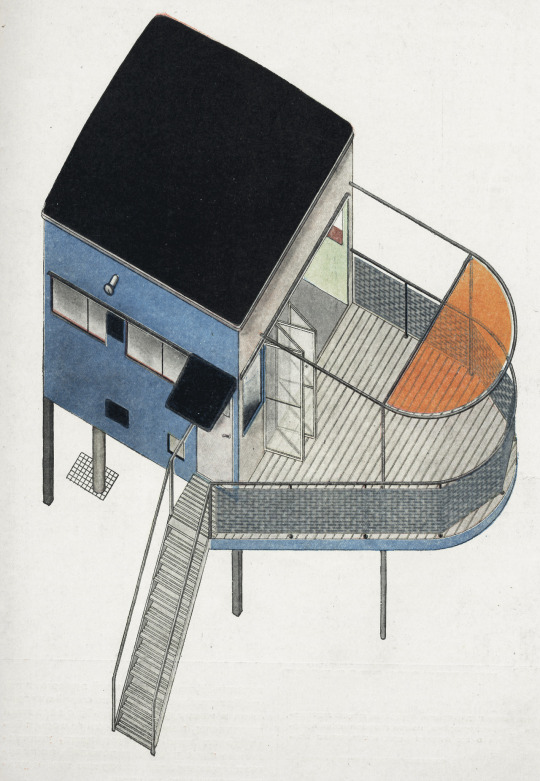
Proposal of a House for two people Moisei Ginzburg Magnitogorsk, Russia, 1930
13 notes
·
View notes
Text

По тетрадным улицам`17
#architecture#concept sketch#architecture drawing#urban#axonometric#architecture concept#architecture sketch
0 notes
Text



2 notes
·
View notes
Text

How To Model in Rhino 3D Palazzetto Dello Sport - Pier Luigi Nervi - EASY 1 Hr Modelling Tutorial
In this video we cover how to model in Rhino Palazzetto Dello Sport (Small Sport Palace) by Pier Luigi Nervi completed in 1957 in Rome, Italy. Pier Luigi Nervi was a master of modularity and dynamic aggregation, basically an analog form of parametric design.
We cover a brief history of the design and construction of the arena, and then we go into detail about how to model the arena Rhino 3D. We cover plans, elevations, and details. We use commands like Array Polar, Divided, Booleans, Extrude, Offset Surfaces, Lofting, Edge Surface and many other Rhino Commands great for Beginners.
#nervi#pierluiginervi#palazzettodellosport#rhino8#architectureportfolio#architecture#architecturediagrams#diagrams#architecturedrawing#rhino3d#3d#archtutorial#adobeillustrator#vectorart#rendering#infographic#graphicdesign#parametric#parametricarchitecture#structure#architectureplan#architecturecompetition#axon#axonometric#architecturesection#perspectivesection#perspective
0 notes